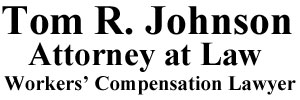Does this defense even exist? The cases that deny benefits under the premise that an applicant was terminated for cause are case specific and for good reason. There is no statute that allows a WCJ to disallow temporary disability benefits because an employer decided to terminate an injured worker. California is an at-will employment state. That means an employee can be fired for any reason or no reason, with impunity as long as the reason does not violate a law or contract. Workers’ compensation is a no fault system which does not consider negligence or fault in determining an injured worker’s right to benefits.
A court using it’s inherent equitable power may deny temporary disability benefits on the basis of misconduct in certain egregious circumstances. For example, if someone is intentionally sabotaging available work so that an employer has no reasonable choice but to terminate employment, perhaps then such a defense may apply. The defense is not applicable because the worker was terminated for cause, but benefits are properly denied because of the intentional sabotaging conduct of the injured worker that leads to modified work’s unavailability.
This equitable defense, if it does exist, should require a high standard of proof because the chance it will be misapplied is great. The underlying problem with the termination for cause defense, and the reason this defense has the potential to skyrocket litigation out of control, is that work environments often become acrimonious once a industrial claim is filed. Then it becomes unclear in determining the true motivation for the termination.
There are many reasons for the acrimony. Laypersons are not doctors and generally are skeptical someone is injured unless they can see it. If someone acts hurt they are perceived as faking it. If someone doesn’t look hurt they must not be hurt.
Injured workers are generally less productive when they are injured because they are working with physical and mental symptoms that are restrictive and distractive . Some employers are resentful when a claim is filed that may raise their premium rates. Some employers believe the employee is at fault because safety guidelines were not followed. The injury is perceived as an unnecessary or avoidable cost and the injured worker is to blame.
Some employers think of the injured worker as damaged goods that will continue to cost them money. The injured worker is seen as a liability instead of a team player. Meanwhile some employees blame the employer for causing the injury by not providing enough safety equipment or training. They feel the employer should do more for their sacrifice of health for the company.
These resentments are part of human nature and lay the seed for resignations and terminations of the employment relationship. Suddenly things that happy employers used to overlook are more significant and become the basis to write up the injured worker. Sometimes an employee is harassed by being offered a menial position, i.e., counting nails, or being harassed verbally by supervisors. Many employees see the writing on the wall and just want to move on so they quit.
There are strong policies behind Labor Code 132(a) to discourage employers from firing injured workers in retaliation. The termination defense undermines the statute by encouraging terminations which can negate the obligation to pay temporary disability benefits. A speaking order 2004 case in the Fourth Appellate District, Division One, Drews vs. WCAB (2004) 69 CCC 7991, dealt with an applicant who was terminated for insubordination. The WCJ found him to be permanent and stationary without any need for further medical treatment. The WCAB concluded that injured worker who was working modified work then fired for cause was not owed temporary disability. The QME in that case indicated in his report the need for treatment was unrelated to the Walgreens incident and that the MRI ought to have been done on a non- industrial basis. The court disbelieved a contrary opinion from a chiropractor. This case was case specific because the workers restrictions were unrelated and the court found he was insubordinate. Furthermore, as a peaking order the case has questionable precedential authority.
In the Third District Court of Appeals, a case rejected the defense denying vocational benefits when an injured worker was terminated from modified work due to having too many unexcused absences. (Robertson vs. Workers’ Comp Appeals Bd. (2003) 112 Cal.App.4th 893) The employer for Robertson argued it would have offered modified work, obviating the need for vocational retraining, except it had to terminate the Applicant for cause, after he accumulated
nine un-excused absences. The court stated, [T]he company does not go so far as to argue that Robertson’s firing disqualified him from receiving any workers compensation benefits for his industrial injury, and rightly so. If Robertson is not disqualified for receiving payment for medical treatment and for disability, why, then, is he disqualified from receiving vr benefits? The WCAB’s contrary award was annulled and the matter was remanded. It would be a disturbing trend if the WCAB chose to take away basic sustenance that an injured worker is constitutionally entitled to, based on a whole myriad of undefined vague and subjectively enforced criteria to terminate for “cause”.
Unlike worker’s compensation the Insurance Code does provide for such a good faith termination defense. In Maywood Glass Company v. Stewart (1959) 170 Cal. 2d 719, there was an appeal from a determination of the Unemployment Insurance Appeals Board which allowed payment of unemployment insurance even though the employer stated that the person was fired for cause. Unemployment Insurance Code Section 1256 says, “An individual is disqualified for unemployment compensation benefits if the director finds that he left his most recent employment voluntarily without good cause or that he has been discharged for misconduct connected with his most recent work.” The fact that the employee failed to meet standards of performance or made mistakes was not “misconduct.” It appears that something akin to intentional acts is needed for a finding of “misconduct.”
The WCAB has no similar statutory authority creating employment law disputes as a preliminary hurdle towards receiving these most basic benefits. The state of California has a policy of encouraging employers to take injured workers back to work and it prohibits their terminations for filing workers comp claims. Yet, if insurance carriers continue to be rewarded for terminating injured workers by not having to pay temporary disability that sends a wholly different message to them.
In summary, when an injured worker has legitimate, medically verified residuals, from an industrial injury, and was working modified work, then loses the job, then short of intentionally sabotaging it temporary disability benefits must be paid. There is no authority other than case specific instances of such sabotage to support an alternative conclusion.
If you or a loved one has been injured at work it is important to protect your legal rights. Call (916) 922-9902 to speak with a work injury lawyer in Sacramento California, Tom Johnson.





